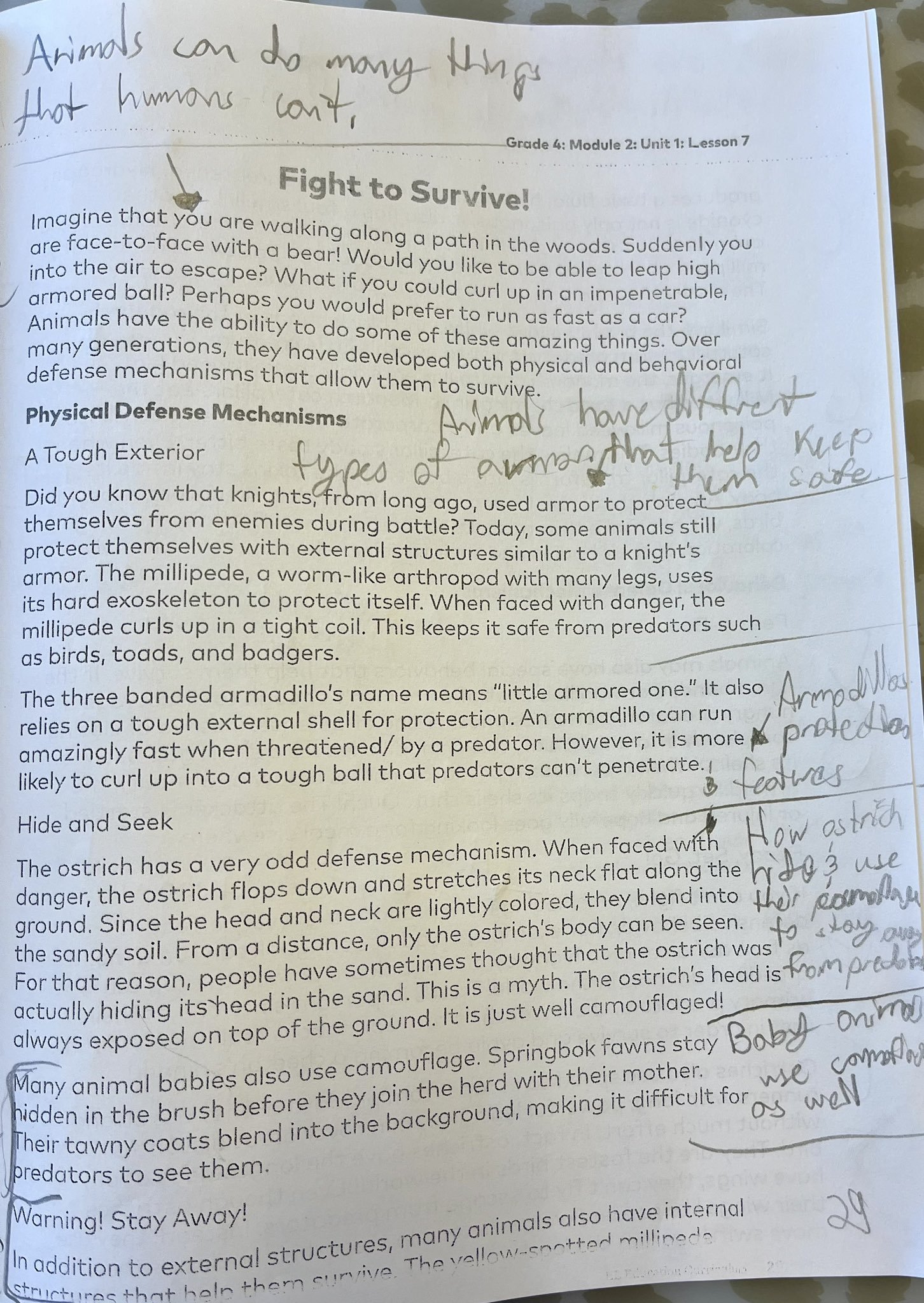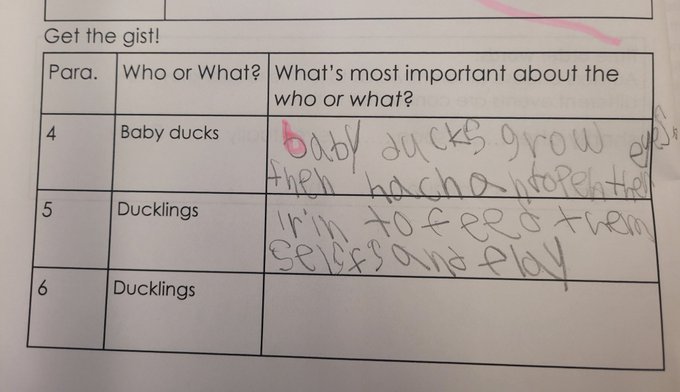
Our blog has moved
Our blog has moved. Please visit: https://scienceofreadingclassroom.substack.com/



Accelerating Student Progress with EBLI: Student Data Profiles
I work in a Title 1/dual language school where many children are MLLs or ELLs. The majority of students in our district rely on the instruction they get in school to support their learning needs. They do not have the means to seek out private tutors when they have large deficits in learning. Over the past several years I have had success implementing structured literacy lessons and helping my students make progress, but the acceleration piece has been harder to achieve until this year. A year ago, I became EBLI trained and started using it in intervention with my students. The results have surprised me. At this point in the year, I have exited 26 students from intervention, meaning that these students not only made progress but caught up to their peers.

Fun Facts: How I Integrate Etymology and Foundational Skills
Fun fact: Words with a “wr” spelling pattern for example have a Germanic origin that implies twisting. For instance, a “wreck” would involve vehicles twisting around each other in a collision. Your “wrist” is the turning joint that allows your hand to twist. When you “write,” you twist lines to form letters.

Simple "Literacy Hygiene" Tasks: A Guide for Parents
While some students may start with stronger “literacy hygiene” or come from more advantaged backgrounds, it’s unfair to expect parents to shoulder the entire responsibility of preparing children for major milestones like learning to read. Just as a dentist doesn’t expect me to perfect my child’s dental care before the first checkup, we can’t place that same expectation on parents. As educators, we now know the most effective science-backed methods for teaching reading; we are the experts in this area. Parents already face countless pressures in today’s world, so we must take the lead in guiding students to become readers, with their support at home. If we’re struggling to do so, the responsibility falls on us to find better solutions. While I am not trying to stop the sales of wonderful resources like “Teach Your Child to Read in 100 Easy Steps” I don’t want families to feel that a child entering kindergarten as a non-reader is falling behind. By focusing on these practical, actionable strategies, we can set students up for success and help them thrive in their literacy journey.

Teachers Teach Teachers: Our Approach to Professional Learning
This year, we’ve experimented with a more targeted approach. In partnership with the Science of Reading-What I Should Have Learned in College Facebook Group, we’ve launched Teachers Teach Teachers, a free professional learning program where we convene groups of teachers over Zoom and show and discuss short instructional clips from our fellows’ classrooms.

How to Change, When Change is Hard: My SOR Journey
My advice: channel your inner Anna and "do the next right thing!" Making big changes all at once can feel overwhelming, especially without support. Instead, choose one or two areas to focus on and make them your goal for the year. Dive deep into learning about them, establish a routine, and commit to it. Thankfully, finding support today is easier than ever. Turn to social media and join groups that align with your goals. Connect with cohorts of educators who are moving in the same direction—finding like-minded individuals, even from afar, can be incredibly motivating. You can also lean on credible resources to reinforce and guide your instructional shifts. Small, intentional steps can lead to meaningful change!

Technology in Education: A Breaking Point, not a Turning Point
I spend a solid three months, yes months, weaning students away from independent technology use in the classroom. After this time, I see their social confidence take flight…At first, this feels and looks like more of a task than learning to read. A lot of this free play is foreign to them. Most of them do not know how to play without a device or a technology game guiding them. But by the end of October though, they burst through the doors each morning, eager to rebuild an army wall, make a card for a friend, or construct a tower bigger than the day before.

The Power of Student Talk: Why Academic Discourse Matters in Every Classroom
When students talk, they process, refine, and reconstruct their thinking. They listen, reflect, and engage with ideas in real-time. They experiment with language, argumentation, and reasoning in ways that simply can’t happen in isolation. And perhaps most importantly—when students talk, they find their voices.

How the Science of Reading and Scaffolding Support Multilingual Learners
As educators, we strive to create classrooms where all students can thrive, regardless of their linguistic backgrounds. I teach a first grade class where over half of my brilliant students speak multiple languages and I love every second of it. This post explores key strategies for scaffolding, differentiation, and creating an inclusive environment to ensure learning is accessible, engaging, and meaningful for all of them.

Think SRSD: How to Get Started
Before learning about Think SRSD, I was really nervous about teaching writing. I had never received professional training on how to help students write, which left me feeling unsure. But now, with the tools and support from Think SRSD, I not only have strategies that empower my students, but I feel more confident as a teacher too. This year, I've focused a lot on integrating writing throughout our day and, more recently, on teaching narrative writing. We started writing narratives in late January, and I have to admit, I was apprehensive at first. My past experiences with teaching narratives hadn't gone well, so I wasn’t sure how my students would respond. But to my surprise, they’ve really loved learning how to write narratives!

Goyen Literacy Fellowship: Apply by February 28th
Are you an exceptional teacher of reading? (Or do you know one?) Do you want $2000 - and the opportunity to share your knowledge and skill with the world?

Knowledge-Building Isn’t Just for Students
The knowledge- building curricula available to us are sufficient for the grades we teach, but teachers need more….We need to know what came before and what lies ahead in the students' educational journey. Most importantly, we need a deep, thorough understanding of the knowledge we teach at our own grade level. Teaching content we barely know, with no schema for understanding its larger context, is both frustrating and uncomfortable. Teachers deserve instruction in these areas as well. I believe this is the next critical step in professional development and teacher training.

Embracing Productive Struggle: Why It’s Essential for Literacy Learning
Productive struggle happens when students face a challenge that’s just tough enough to make them think, but not so hard that they shut down. It’s that sweet spot where learning happens. In a literacy classroom, this might look like a student working through a tricky text or figuring out how to decode a tough word. Sure, it’s not always comfortable, but that’s where the magic happens—when they push through the discomfort and find the solution on their own.

How to Talk So Teachers Will Listen
Dos:
Ground your advice in YOUR personal experience. Be vulnerable.
Connect that experience to practice and research.
Be conversational. Write like you speak.
Ask clarifying questions to understand the context and establish your sincere interest in the teacher’s question.
Dignify a careful question with a careful response. Take your time responding.
Be specific. “Listen to Sold A Story!!!!!!” doesn’t count.
Be nice and assume good faith.

Debates in the Dark; Instruction in the Light
When we discuss and debate classroom practice, we should bring it into the light with artifacts and concrete examples from actual classrooms: videos, writing samples, assessments, worksheets, slides. I know that both sides would agree that what Sarah experienced in 7th grade ELA class was ineffective and soulless. And I’m also confident that both sides would celebrate classrooms like this one or this one or this one where the teachers are leveraging strategies to get students learning and thinking more deeply about the text they’re reading.

AI Integration in Teaching Practices: Achieving Two Things at Once
For example, I asked ChatGBT to create a worksheet about the States of Matter, a 5th grade Next Generation Science Standard. In the worksheet, students construct similes about states of matter. So, my students might be working with a 4th grade reading standard, but they're doing it with 5th grade content. This creates an efficiency that mitigates some of the learning loss many have written about while also addressing a grade-level science goal.

I Have New Reading Materials. Now what?
All over the country, states are putting in place new legislation that guides how literacy can be taught. These laws have up-sides, like requiring robust foundational skills teaching, or screening students for reading difficulties. However, many of the laws also come with lists of approved curricular materials*. As districts select and purchase new materials, many teachers are opening shiny boxes of teachers’ guides and student readers and thinking: “Now what? I cannot possibly do every activity in this lesson plan given everything that I have to teach in a day.” Often, teachers don’t get much training on the program materials, so it’s tough to know which parts of the lesson are essential and which can be shortened or cut out.

Building Literacy Success: Nurturing Kinder Minds Through Literacy Stations
After independently researching the “Daily 5,” I learned that skills were not being challenged and not supporting the learning aligned or intentionally. So, the Daily 5 turned into Literacy Stations, which are grounded in the Science of Reading. The Literacy Stations would give my students the opportunity to work on the skills taught in whole group instruction independently while challenging and supporting their independent needs. In this blog, I will explain how Literacy Stations work in my classroom.
